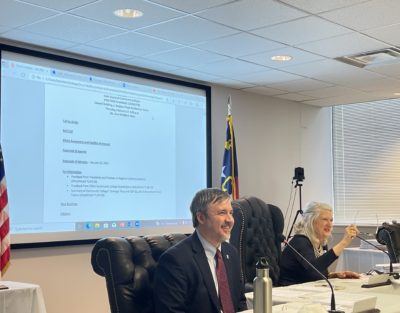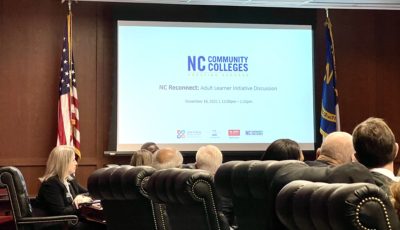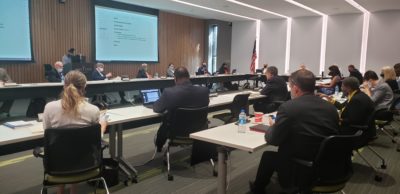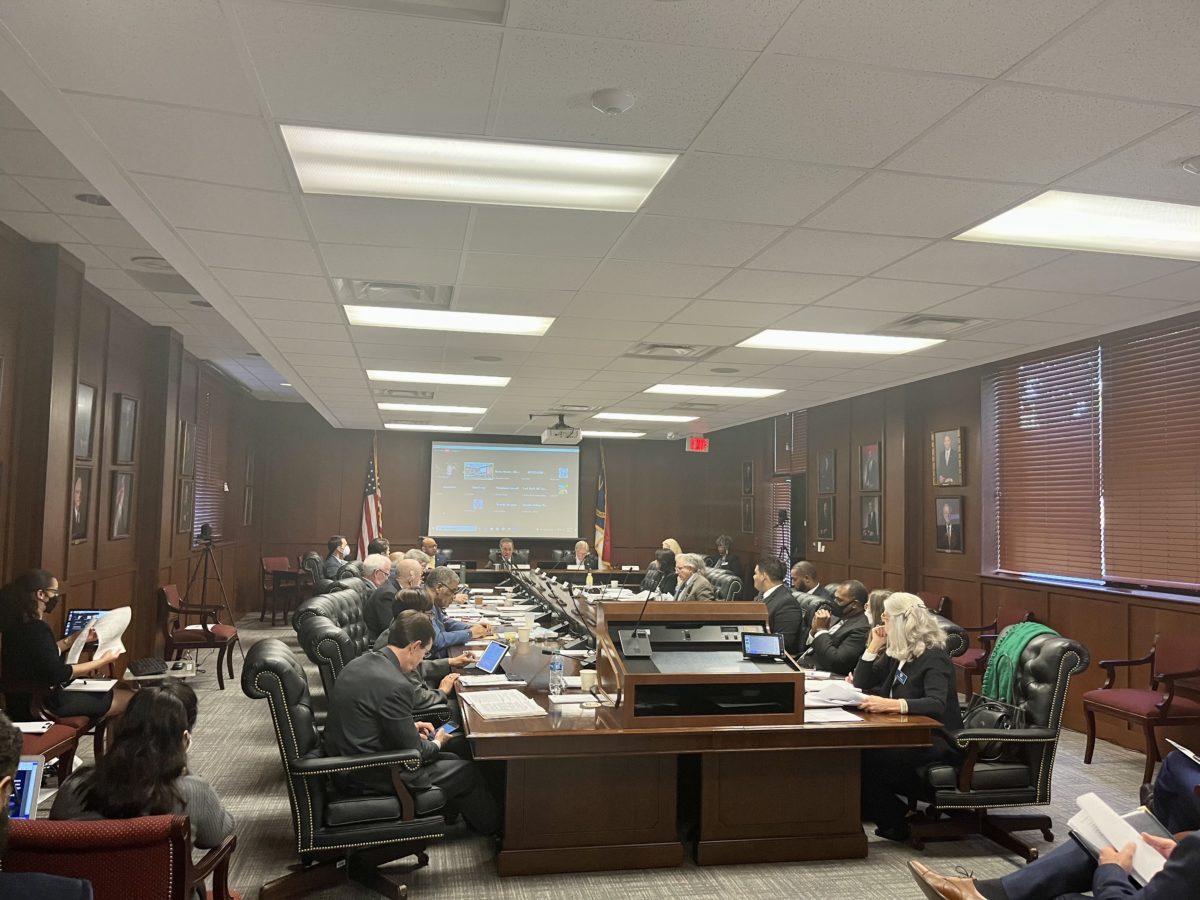
|
|
After conducting a one-year performance review of North Carolina Community College System President Thomas Stith in January 2022, the State Board of Community Colleges met in closed session for more than three hours last week in part to develop goals for the system president.
The Board identified a need to set goals for the system president last December and January, Board Chair Burr Sullivan said.
“We realized we were evaluating President Stith without the benefit of set goals that have been approved by our system,” Sullivan said. “So we told him in January that we would be coming back to him in March with some goals, and we have done that by creating a whole new governance document of self evaluation that we’ve worked on for a period of two or three months.”
In January, the Board’s one-year review of Stith, which was held in closed session because it’s a personnel matter, lasted almost 3.5 hours.
The community college system has had six leaders in about as many years. Since Stith became president, the system secured its largest budget in the last 10 years but has also faced a lot of transition on the Board and among top executive leadership positions.
On Friday, the Board’s closed session focused on outlining five goals for the system president, Sullivan said, which they will announce at the Board’s April meeting.
“It started back in October, and has three phases — goal setting for the president, goal setting for our Board, and goal setting for the system,” Sullivan said. “We dealt with just one of those on Friday — that is the goal setting for the president.”
To help identify system, Board, and president goals, the Board approved in February its first self-evaluation survey. All of these goals will be weaved into the system’s four-year strategic plan.
The Board also approved a $6,000 contract with training organization TaylorTrain to conduct a climate survey among community college system employees. The Board expects to have results from TaylorTrain by or around April 15.
This climate survey is in addition to the organizational assessment launched by the system office in December 2021 and conducted by CampusWorks to ensure the system office is properly resourced to meet its vision and mission. The final report for that assessment is expected in April.
The Board never moved out of closed session on its YouTube livestream of the meeting, but multiple Board members said no new business was taken when the Board moved to open session before adjourning.
NCCCS contributes $19.3 billion to state per year
The community college system contributes about $19.3 billion to the state’s economy each year, according to an economic impact study presented at the Board meeting last week.
The latest state budget included $750,000 for the study, which was conducted by labor analytics firm Emsi/Burning Glass to evaluate the labor dynamics in the state and the impact community colleges have on students and businesses.
The system nearly doubles the revenue it receives from taxpayers, the study shows. On average, the report shows that N.C. community college students have a rate of return on their college investment of 22.3%.
“The community college system serves over half a million students each year and fuels North Carolina’s job engine,” Stith said. “Our strong partnerships with business and industry in our communities and around the globe are creating a demand for our community colleges to provide the unique and skilled workforce needed, and we are leading economic recovery efforts in North Carolina.”
The data and survey collection for the report started in June and went through August. The report will be shared across the state through May, with the goal of highlighting the economic value of the state’s 58 community colleges. The study included an individual report for each college.
Here are some highlights from the report, looking at the system from 2019-2021:
$19.3 billion added to the state’s income, or 3.4% of the state’s Gross State Product (GSP).
303,842 credit students and 381,453 non-credit students served.
$1.4 billion paid in payroll/benefits.
$212.4 million in tuition revenue.
$93.2 million added state income in construction spending.
$17.1 billion in higher alumni earnings and increased business profit.
$588 million added in state income through relocated/retained student spending.
36,422 employees and support for 319,763 N.C. jobs.
Sen. Deanna Ballard, R-Alleghany, who co-presented the report with John M. Belk Endowment Chair MC Belk Pilon and Anna Brown from Emsi/Burning Glass, gave her continued legislative support for the system. The new state budget allocates $2 million for implementation of recommendations from the study, specifically to expand and target efforts proved to have greater economic impacts.
“As we are closing in on visiting all 58 colleges, we’ve seen firsthand the impacts the colleges are making on students, communities, businesses, and the state at large,” Belk Pilon said. “Yet we’ve also seen and realized that our state’s biggest asset has been undervalued, underfunded and under-appreciated. We often hear that community colleges are our state’s best-kept secret. This is a problem — or at the Endowment, we like to think of as a massive opportunity.”
Moving forward, the system plans to release a request for proposals (RFP) in April to distribute the funds. Colleges will identify their most impactful programs and then apply for a “competitive grant process.” Winners will be awarded in fiscal year 2022-23.
A website outlining the findings of the economic impact study and of details at each of the 58 colleges is also being finalized by CRISP Communications, with more details expected soon.
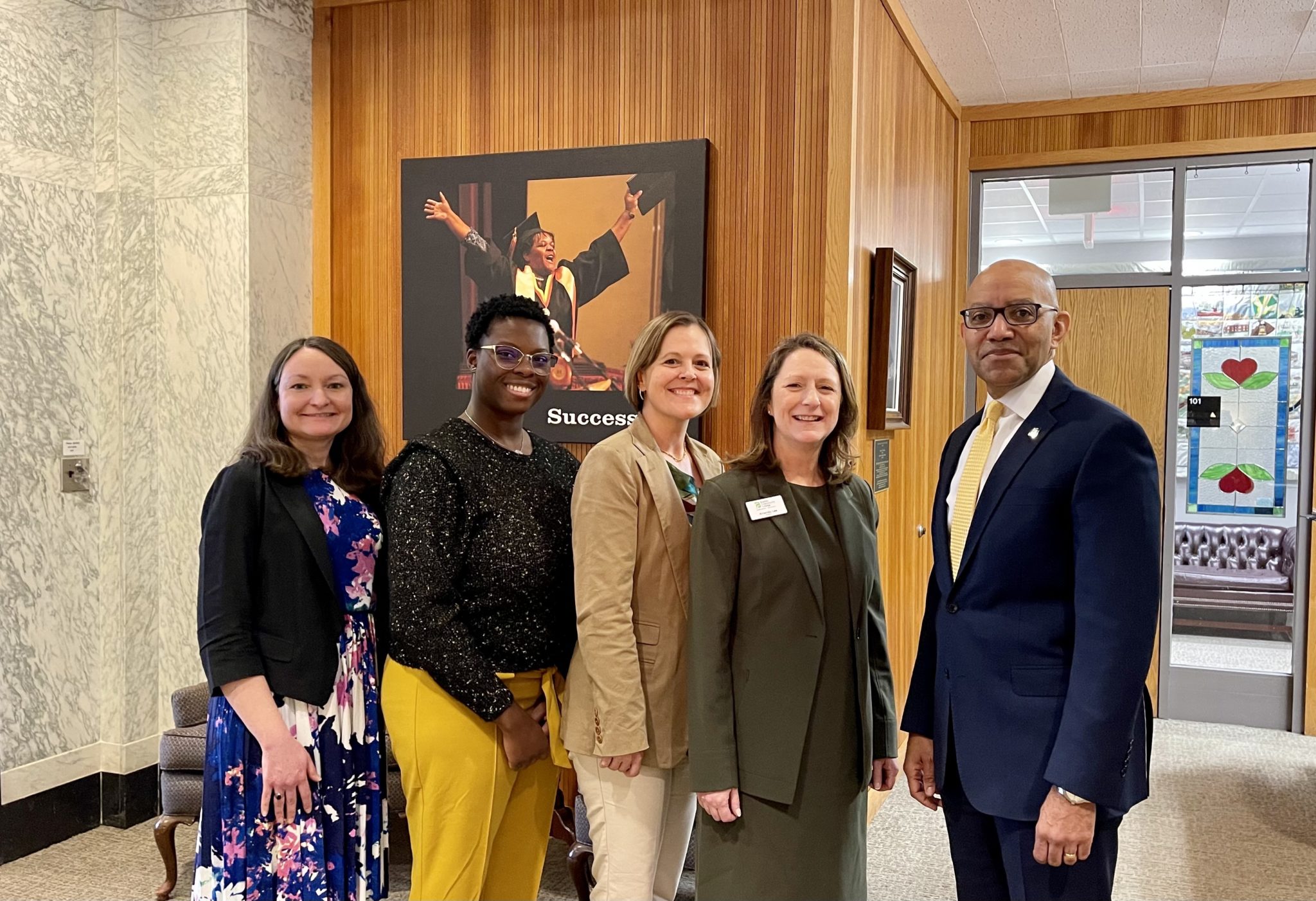
Student headcount increases
Though recent data shows student headcount at North Carolina community colleges increased since last year, numbers are still down from before the pandemic.
Total student headcount increased 5% from fall 2020 to 2021, for example — still reflecting a 13% decrease from fall 2019. Curriculum headcount, the largest academic level, is the only group that saw a decrease this year — decreasing another 2% this fall after decreasing by 5% in 2020. Workforce continuing education headcount increased by 15% from 2020 but is down 20% from 2019. Basic skills headcount, the smallest academic level, increased 25% and is still 24% lower than pre-pandemic numbers.
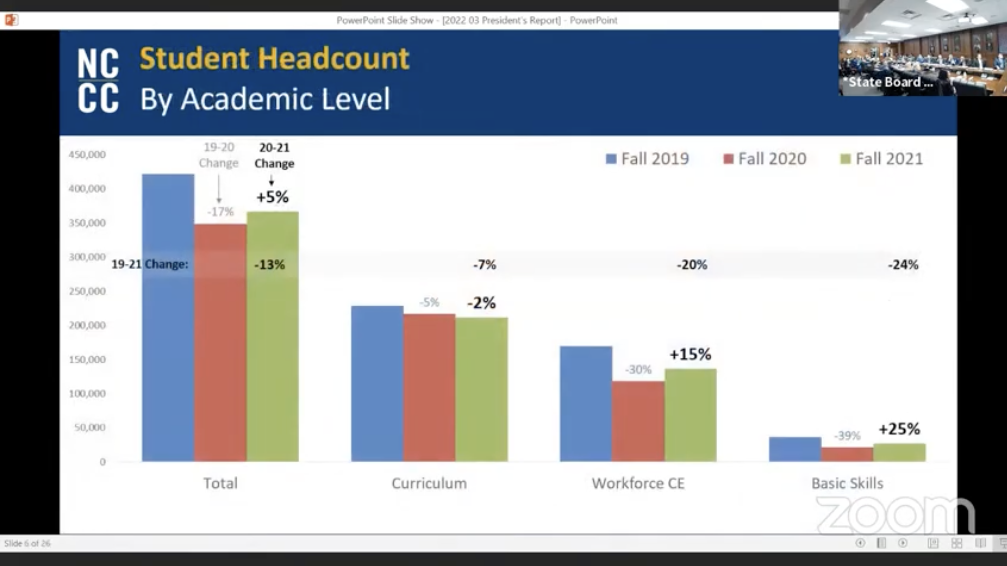
This data was presented by Stith at last week’s Board meeting. These findings follow his February announcement that 33 of the system’s 58 colleges reported increases in full-time student equivalents (FTE) since fall 2020.
Community colleges receive funding according to their FTE, a measure based on the number of accumulated student hours. Headcounts, presented by Stith, reflect a college’s total number of students, including those in school part-time.
“You can see there’s still work to be done,” Stith said at the Board’s meeting last Friday.
By age group, all student group headcounts increased this year from fall 2020 except for students younger than 18, Stith’s presentation shows. None of them returned to pre-pandemic levels, however.
Similar trends were evident when sorted by race/ethnicity. Stith noted an 11% increase in headcount among Black males from fall 2020 and a 17% increase among Hispanic males — two groups particularly impacted by COVID-19 enrollment challenges. Both groups are still down significantly from pre-pandemic headcounts.
“As you recall, during some of our conversations last year we saw a significant drop in our African American males and Hispanic males, and so we’re seeing positive results in those two areas… we’re still waiting for final spring numbers,” Stith said.
In response to pandemic-related challenges, the programs committee also presented a new definition to the Board concerning types of curriculum — “hybrid flexible (HyFlex)” instruction. The definition was approved by the Board, who must adopt the new definition at the April meeting. The HyFlex option joins traditional, online, hybrid, and blended instruction.
HyFlex is defined as: “College curriculum courses in which 100% of the instruction is offered face to face with the instructor in a physical classroom and 100% of the instruction is offered online allowing students an opportunity to choose whether to attend classes during regularly scheduled in-person sessions or participate online synchronously or asynchronously.”
The new definition will allow the system to “meet students really uniquely where they are, as it relates to being able to use online learning in a different way,” programs committee chairperson Bobby Irwin said.
Personnel
The community college system recently created nine cybersecurity positions to support a strong cybersecurity and risk management program, after being allocated $1.49 million in recurring funds from the General Assembly’s newly passed state budget. The pay for each of the positions starts at $110,000.
The personnel committee recommended its third hire on Thursday, Brennan Rufa, who was approved by the full Board on Friday. Rufa comes to the System Office from Applied Research Associates, where he was an information systems security officer. He will graduate from Wake Technical Community College in summer 2022 with an associate degree in cybersecurity and also received advanced training from the U.S. Army.
Elizabeth Grovenstein, the Board’s chief financial officer and vice president, introduced her replacement, Brandy Andrews, to the Board on Friday. Andrews will start on April 1, and has worked with the system office for 16 years.
Next steps for strategic plan
The system’s strategic planning committee also provided an update on its new four-year strategic plan.
“We are in the beginning to the middle of our strategic planning process,” committee chairperson Ann Whitford told the Board.
Board members identified the following top five issues for the strategic plan at their February committee meeting: supporting top-quality faculty/staff, expanding education/training pipeline, boosting student success for all, addressing employer needs/talent development, and improving system funding effectiveness.
The strategic planning committee met the Monday before the monthly Board meeting to discuss its student survey results and stakeholder focus group findings concerning the plan.
The survey was completed by 3,104 students, about 0.9% of the system’s student population, from 49 community colleges. The racial/ethnic composition of the survey closely matched the composition of the North Carolina community college population, Whitford said.
One survey question asked respondents what three issues, if addressed, would make it easier for them to enroll. The top answer, “N/A (it was not difficult to enroll)” was selected by 46% of respondents. After that, 44% said balancing college with work/family commitments, 34% said cost, 21% cited FAFSA challenges, and 14% said transportation. Committee members mentioned that some students might be reluctant to share food and housing insecurity, even in an anonymous survey.
Whitford highlighted that 75% of students who responded said community college was their first choice of education, and 82% agreed or strongly agreed that the college made an effort to make students feel welcome. Six percent of respondents disagreed, which Whitford said the committee should still take note of.
Since September, the State Board of Community Colleges has been engaged in a strategic planning process that will outline their vision for the system’s future. The committee will present either a final draft or plan in July.
The next State Board of Community Colleges’ meeting is April 21-22 .



